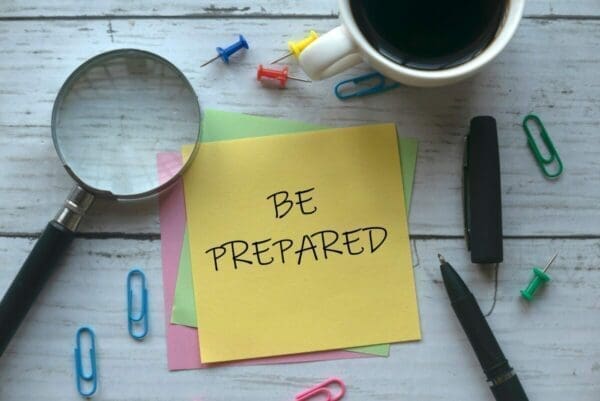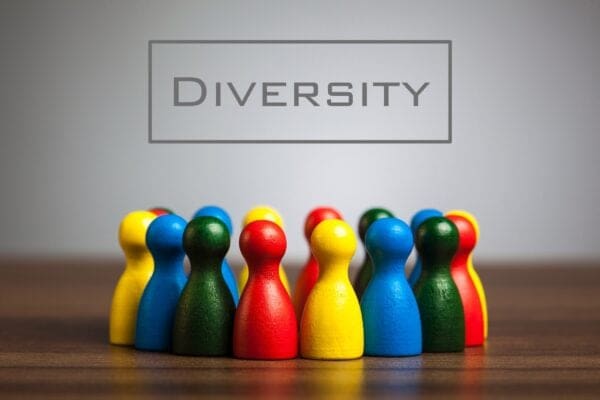Group Facilitation is a Key Skill
And one that all supervisory and management level leaders need to have. Here we will answer 7 frequently asked questions about group facilitation, giving important tips and techniques that you can use when facilitating a variety of different group events.
What Does it Mean to Facilitate a Group?
Group facilitation is about being a neutral, objective voice in the group. You are a guide through a set structure that has been outlined for the group. For example, this can be a meeting agenda. Also, it can be training objectives to be achieved during a session or programme.
Perhaps you are facilitating a team briefing and need to make sure that all relevant information has been shared. Whatever the group event is, your role is crucial in making sure that the time used is not a waste. So, you need to make sure that everyone leaves having gained something from the time spent together.
Group facilitation is not always an easy role, though it can be very rewarding. Firstly, you need to be aware of the group dynamic. Secondly, you need to be aware of the key objectives of the event. Thirdly, you need to remember your neutral role in the situation. And finally, you need to make it so that all parties feel they have benefitted from the experience. Those may all sound easy. However, this is not always the case, especially when you consider the first point about the group dynamic.
What is the Purpose of Group Facilitation?
In meetings, the purpose of group facilitation is to create structure and mediate where necessary. As all meetings should have clear agenda points, your role is to make that happen. Perhaps you will need to step in to keep everyone on track. Or maybe, you need to ensure everyone has their say when it comes to the agenda point being discussed. Also, you may need to help with negotiations during the meeting.
In training sessions, the role is slightly different. While the above-mentioned reasons can still be relevant, the role is more that of an instructor. As a training facilitator, you need to ensure that all learning objectives have been met.
Also, you need to ensure that you are engaging all participants throughout the session with your delivery style. In addition, you need to look at ways of making the session as interactive and participative as possible for increased learning. A final thought for facilitating training would be to look at checking learning effectiveness during and at the end of the session.
Other events where facilitation is necessary might be team building, workshops, inter-departmental projects, group panel interviews, disciplinary or grievance meetings, and more. All of these need neutral guides, or facilitators, to get them to their end result.

What are the Skills of a Group Facilitator/Facilitation?
There are numerous different skills needed for group facilitation to be successful. Here are some of the key skills explained to put them into practice.
Sticky Learning ® is 7 times more effective than 1-day training courses. Plus, you will get a Chain of Evidence proving your Return on Investment. Discover soft skills training that changes behaviours long term.

Prepare in Advance
For any group facilitation experience, advanced preparation is essential. You must have your own expectations of the event, whether it is a meeting, training, team building, etc. As the facilitator, you should plan in advance for possible barriers, tangents, and obstacles. So, what should you prepare? Firstly, know the agenda or objectives of the group facilitation. Understand what needs to be achieved. Secondly, know your setting, especially if you are facilitating in a new or different location. Know the layout, how the group will be positioned, etc.

This will help in deciding how the group can best interact and communicate. Next, consider any technical requirements for the event. Do you need video conference facilities? Perhaps, you need resources for a presentation. Be sure to check all of these in advance to be sure that everything is in proper working order.
Assertiveness
You need to have the confidence to lead the group while facilitating them. This needs to be delivered in an assertive rather than an aggressive way, Remember, you want the group to follow your guidance to reach the end of the group facilitation. It is possible that you will facilitate a meeting or training session that has senior members of your team attending. Do not allow this to become an obstacle. Instead, allow this to increase your courage and confidence.
You have been chosen as the facilitator for a reason. By taking an assertive approach, you show your ability to maintain control of the situation. Also, you will keep everything on track in terms of time, agenda, and focus. But, again, avoid an aggressive approach which will alter the mood of the group in a negative way.
Effective Communication Skills
While group facilitation is about the group communicating, the facilitator must be an effective communicator. Use clear, concise instructions. Allow pauses for everyone in the group to absorb what has been said. Also, be ready to answer questions that the group may have.
Active Listening
You may be required to recap key elements of the group discussion. Be sure to give your full attention to the topic at hand. Remember, you need to know what’s happening in the room. Where necessary, take notes, especially if meeting minutes are required, or have someone present to do the same. Also, if you feel you missed something important, don’t be afraid to ask for it to be repeated. Avoid distractions as much as possible so you are not caught off guard as the group facilitator.
Body Language
Watch your own body language as well as that of the group members. When speaking, avoid folding your arms or placing your hands in your pockets when standing. Another action to watch for is eye-rolling. This tells you that members of the group are not engaged in what is being discussed.
Are people starting to fidget or are they looking around the room or off into the distance? Have any members of the group started using their phones while you or others are talking? It is your role as the facilitator to catch these non-verbal signs in the group. As a result, you may need to address any of these actions to ensure the group stays focused and ready to engage.

Fairness
We mentioned previously that the role of a facilitator is to be neutral. This means giving everyone their chance to speak. There will always be at least one “talker” in any group dynamic. Your role is to ensure that the “talker” doesn’t take over. Also, you may be facilitating a group where you have friends in attendance. Remember, to show true fairness, you need to make sure you are not over-indulging friends. However, don’t go to the other extreme either of ignoring them. Treat the group with respect, give importance to everyone involved, and stay neutral.
Timekeeping
Another important skill is time management. Group facilitation means managing the group but also managing the time assigned to the event. If you feel that one person is taking too long, find a diplomatic way of moving on. Perhaps offer to come back to that person and point later if time remains. Also, some agenda points nay need more time than others. When doing your preparation, keep this in mind when planning your time. And mention expected time frames for different stages or steps of the process as part of your introduction where possible. Be sure to keep your times realistic.
What are Facilitation Techniques?
There are different approaches that facilitators can take depending on the event in question. You may find some of these useful to incorporate into your meetings, training sessions, workshops, etc. Mix and match what best suits your event.
Icebreakers or Check-ins
These are a great way of getting a new group talking at the start of an event. They can also be used for that are familiar with each other but haven’t met in a while. Be sure that the icebreaker is relevant to the topic and the group dynamic. Not everyone appreciates these types of activities. So, make sure these activities match the mood of the event.
Brainstorming
This is useful to use in many different group facilitation activities. It helps generate ideas, it gets groups talking, and it can help manage a larger group by splitting them into smaller groups.
Group Activities
These, like icebreakers, need to relate directly back to the topic at hand. These are best used in training sessions, workshops, team-building activities, and even inter-departmental projects. You can select between physical or mental activities. They can be done in pairs, small groups, or everyone together. Also, they can be a great way of keeping people energised as well as active on the topics at hand.
Round Table – Everyone Has Their Say
A great way to allow everyone in the room to have their voice heard. You can choose to do this from the person sitting next to you. Or you can ask for a volunteer to start. Also, you could do it alphabetically. There are many ways of choosing who will speak and in what order. Remember, that the idea is to allow everyone a chance to share their ideas, even the quiet ones in the group. Consider letting them know that this will happen at the start of the meeting or session.

What Makes a Good Group Facilitator?
So, what makes a good or great group facilitator? We have seen that there are many skills that facilitators need. Also, that there are a variety of techniques they can use to improve their chances. However, all effective facilitators have certain personal qualities in common. They need to use their CHARM.
C – Claim Your Role
From the start, be sure to let the group know your role in the process. First, state your intentions clearly. Are you going to be the chief speaker? Do you expect interaction and participation? Secondly, let everyone know how the process will work for when people want to speak. I would advise asking people to raise their hands. This just reminds people too much of school. In meetings, be sure to let people know when they can have their say or ask questions. For training, encourage participation and explain group discussion or activities clearly. Most of all, let them know that you are in charge and will have the final say.
H – Help When Needed
You may not always be required to intervene or assist through every step of the process. However, the group needs to know that your help is available at any stage where required. Make sure this is clear for all participants of the group event you are facilitating.
A – Adaptability
In group facilitation, you need to be ready to adapt and be flexible to the needs of the group. Although agendas or learning objectives have been set, you will need to be able to make decisions. Decisions about the direction the group will go in should they deviate off target. I had this experience during a supervisory skills training session. The group was distracted because of a new HR policy that had been released that they were concerned about.
As the facilitator, I had to decide whether to push through the content of the training or address the issues concerning the group. I chose to invest the time in what they were focused on. The result was a happier group, clarity of the policy, and appreciation from them that someone had listened and explained. This led to increased participation and commitment during the following sessions we had together as a group.
R – Relate to the Group
Perhaps someone in the group has a difference of opinion with what is being said. Or maybe there’s more than one approach to getting something done. Be ready to relate to how the group is thinking and where they are coming from. What points have they raised that others haven’t thought of? Be sure that you don’t rush to brush off a suggestion or contribution of any member of the group too quickly. Also, use your own experience and knowledge to contribute where needed. And most of all, show empathy to others in the group when necessary.
M – Maintain Control
Linking back to Claim Your Role, you need to ensure you are doing everything possible to maintain control of the group. We know different people in the group have their own personalities. That’s a positive in most cases. Different points of view and opinions lead to open communication and idea-sharing and generation. However, it can also lead to conflict and heated debates that can become difficult to manage.
This is very much the case when people feel they are being targeted. Also, when people become defensive about their abilities and results. Your role is not to take sides. Instead, you need to manage to get everyone back on track without egos being hurt or relationships being damaged. Although it’s not always easy, it can be done. Have confidence in yourself and you will get the group working together again.
How Can Group Facilitation be Improved?
Think of group events you have attended. Think back to what worked well and what made the experience painful. You will probably remember a mix of the good, the bad, and the ugly! From experience, I know that group facilitation fails because of the facilitator, not the group. I have seen groups take over and the facilitator loses complete control.
Similarly, I have seen training sessions where people readily fall asleep due to lack of engagement and because of the session delivery. In the past, I have even seen open warfare between departmental heads because they are playing the blame game and nobody is taking charge of the group. The facilitator has such an important role, as stated before. When you follow the above-mentioned tips and techniques, group facilitation can be greatly improved. You might even consider taking a group facilitation course to improve your skills further.

How Can I Make Facilitation Interesting?
Your own personality and style of delivery will play a big part. Remember CHARM from earlier? Well, add to that experience, self-confidence, and preparation. The more you have of these, the easier it is to facilitate different group events. However, don’t mistake arrogance for self-confidence. Likewise, don’t underestimate the importance of preparation for all group facilitation experiences. And the experience you gain can start small with hosting team briefing and short on the job training before moving to bigger events.




